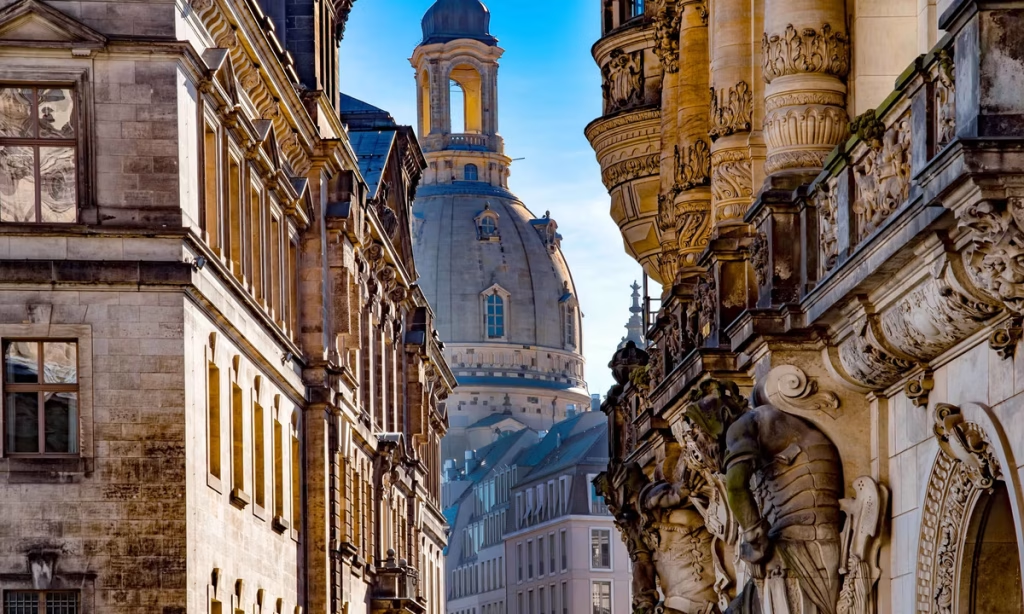Before the Second World War, Dresden was commonly regarded as Germany’s most beautiful city, marked by Baroque silhouettes and filled with cherished collections of the fine and applied arts. Then came the Allied air raids of February 1945, and Dresden gained underwent what could be described as a horrific rebrand—becoming Germany’s most decimated metropolis. Decades of rebuilding later, however, it is once again what Germans call a Kunststadt—a city of art.
The art there is overwhelmingly concentrated in the Staatliche Kunstsammlungen Dresden (SKD), comprising 15 museums that still largely reflect the tastes and tendencies of Saxony’s House of Wettin, who reigned from the 15th century until 1918. The city’s golden age came in the 18th century, when the Wettin ruler Augustus the Strong served as both the prince-elector in Saxony and the king of Poland, turning his Residenzstadt into one of Europe’s most alluring and spendthrift courts. The splurging continued under his son, Frederick Augustus II, whose purchases brought many of Europe’s most celebrated paintings to the city.
These days, the core of Dresden’s key collections are all within walking distance from one another, concentrated in the Zwinger, August the Strong’s Baroque showpiece; the Residenzschloss, the recently rebuilt and re-imagined former royal palace; and the Albertinum, the late-19th century museum building, originally meant to house sculpture and now displaying art made after 1800.
1. Raphael’s Sistine Madonna (1512/13), Gemäldegalerie Alte Meister, Zwinger (Semperbau)
This High Renaissance masterpiece was originally commissioned by Pope Julius II, then hung in a church in Piacenza, northwest of Parma, before arriving in Dresden in 1754, after Frederick Augustus II paid a fortune for it. The Madonna—one of the artist’s last—has a grandeur reminiscent of classical antiquity; at the bottom, meanwhile, are two placid putti who have become famous in their own right.
The painting, now an anchor work in the mid-19th-century building designed by Gottfried Semper—arguably Europe’s most talented historicist architect—was another era’s Mona Lisa. It remains one of Raphael’s most recognisable works.
Admission €16 (full price). Directions here
Raphael, Die Sixtinische Madonna (Sistine Madonna) (1512-13)
© Gemäldegalerie Alte Meister, SKD, Foto: Estel/Klut
2. Casper David Friedrich’s The Great Enclosure (1832), Galerie Neue Meister, Albertinum
Born on the north German coast and educated in Denmark, Casper David Friedrich moved to Dresden in his early 20s, made his name as Germany’s Romantic painter ne plus ultra, then died there, age 65, in 1840, his earlier fame a fading memory. A few years later, the director of Dresden’s Royal Museums began collecting for a new “Modern” department, as it was known, and by the end of the century, with Friedrich’s reputation on the rise again, several of his works were among that collection’s leading attractions.
This late Saxon landscape—both bleak and beautiful, with premonitions of the Modernist revolution to come—was acquired in 1909. Along with the artist’s early and revelatory Tetschen Altar, it is now the stand-out Friedrich work in his longtime hometown.
Admission €16. Directions here
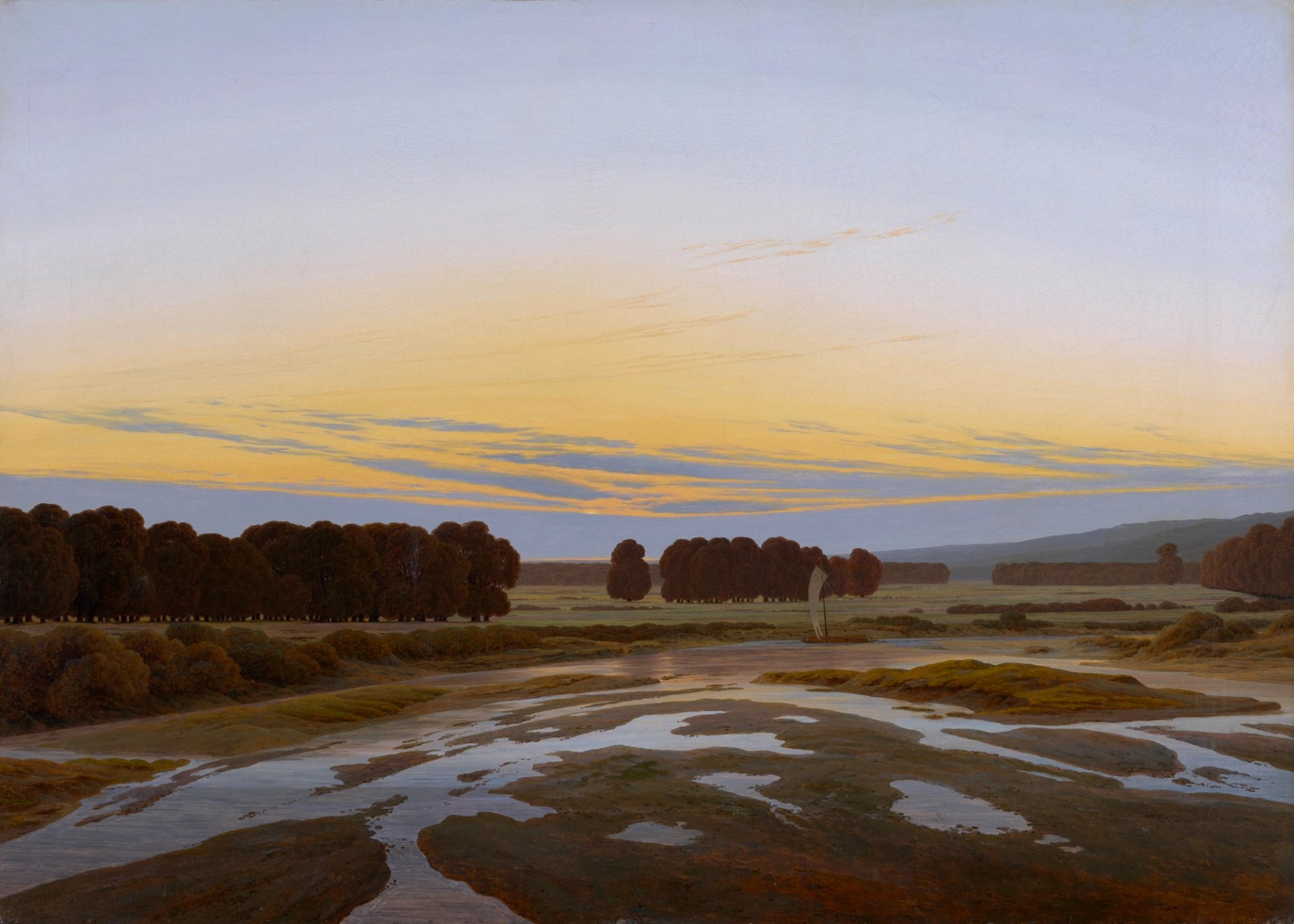
Caspar David Friedrich, Das Große Gehege bei Dresden (The Great Enclosure) (1831-32)
© Albertinum, Galerie Neue Meister, SKD, Foto: Elke Estel/Hans-Peter Klut
3. Cherry pit with 185 carved heads (just before 1589), Grünes Gewölbe, Residenzschloss
The richly decorated rooms of Dresden’s Grünes Gewölbe (named for the original green detailing) have been displaying Saxon treasures, which date back to the 16th century, since the time of Augustus the Strong. By turns extravagant, ingenious, and outright weird, the priceless objects here are among Dresden’s—indeed, Germany’s—leading attractions.
This tiny, elaborate and bizarre cherry pit, with its manifold carvings and enamel-and-pearl decoration, is among the smallest of the collection’s fanciful objects, but also one of the most celebrated. A magnifying glass installed in its vitrine allows you to appreciate the 4.5-cm work, made by an unnamed craftsman.
Admission €16. Directions here
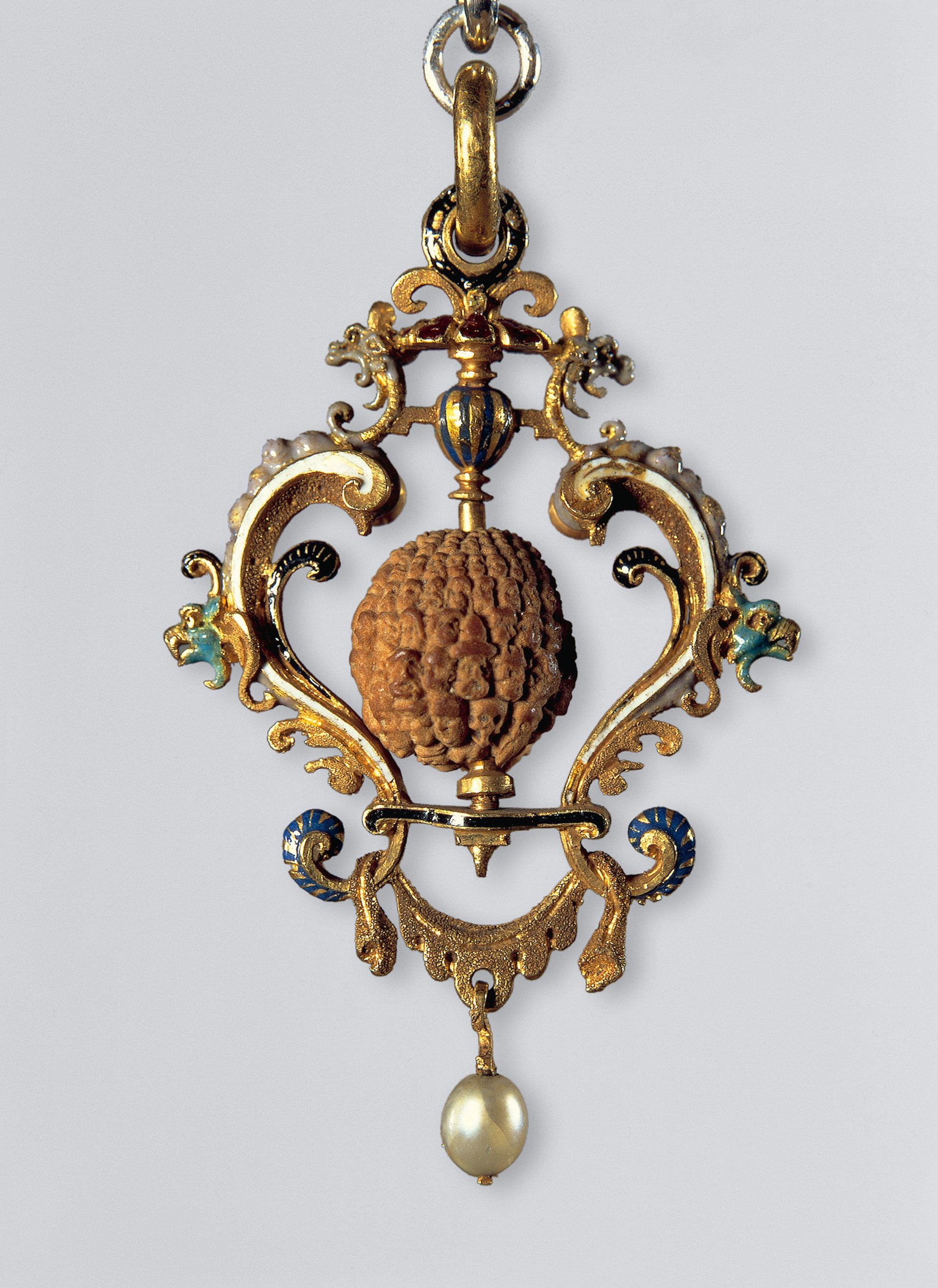
Cherry pit with 185 carved heads (just before 1589)
© Grünes Gewölbe, SKD, Foto: Jürgen Karpinski
4. Jan van Eyck’s Portrait of an Elderly Man (around 1435/40), Kupferstich-Kabinett, Residenzschloss
Dresden’s collection of prints and drawings features some 500,000 works dating back to the early 16th century. Represented are artists ranging from Albrecht Dürer and Michelangelo to Georg Baselitz, but perahps its best-known work is what scholars regard as the lone surviving drawing by Jan van Eyck.
The 21-cm-high drawing is related to an oil-on-canvas portrait of an Italian diplomat-cardinal now in the collection of Vienna’s Kunsthistorisches Museum, but is more lifelike—and contains more pathos—than that work.
Admission €6. Directions here
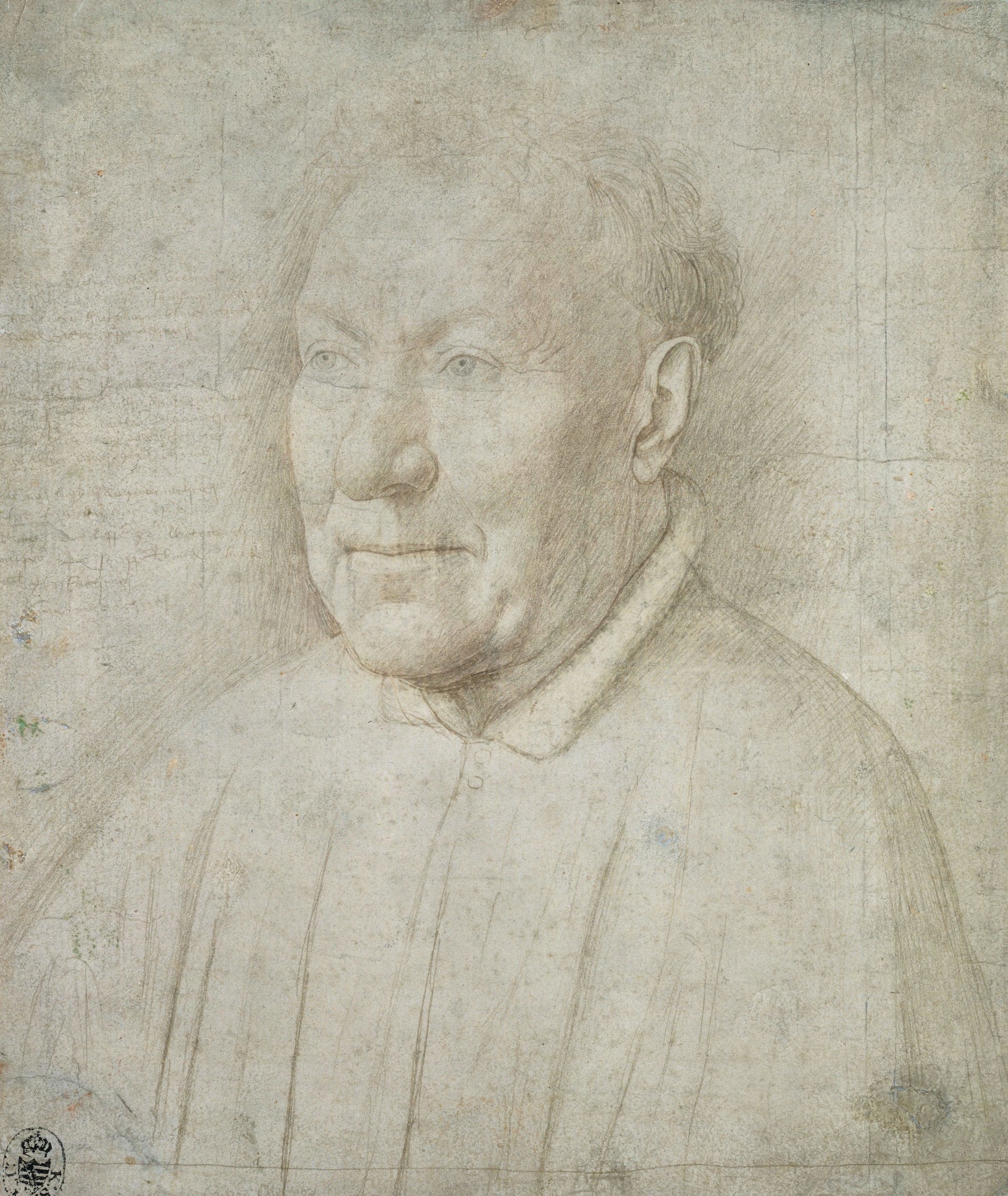
Jan van Eyck, Portrait of an Elderly Man (1435-40)
© Kupferstich-Kabinett, SKD. Photo: Herbert Boswank
5. Otto Dix’s The War (1929-32), Galerie Neue Meister, Albertinum
Though known as a Baroque capital, Dresden later became a testing ground for Modernism. The city’s Academy of Fine Arts was arguably Germany’s leading art school in the years surrounding the First World War, helping to foster both Expressionism and the Weimar era’s New Objectivity. Otto Dix—a native of the Thuringian city of Gera—was both an alumnus and a professor here, before his scathing depictions of German society were denounced as “degenerate” by the Nazis.
Dix, an army veteran, created a number of anti-war works, but The War, a triptych with a predella, may be his most powerful. It is inspired by Germany’s Old Masters, notably Matthias Grünewald, and blends shocking hyperrealism with nightmarish fantasy.
Admission €14. Directions here
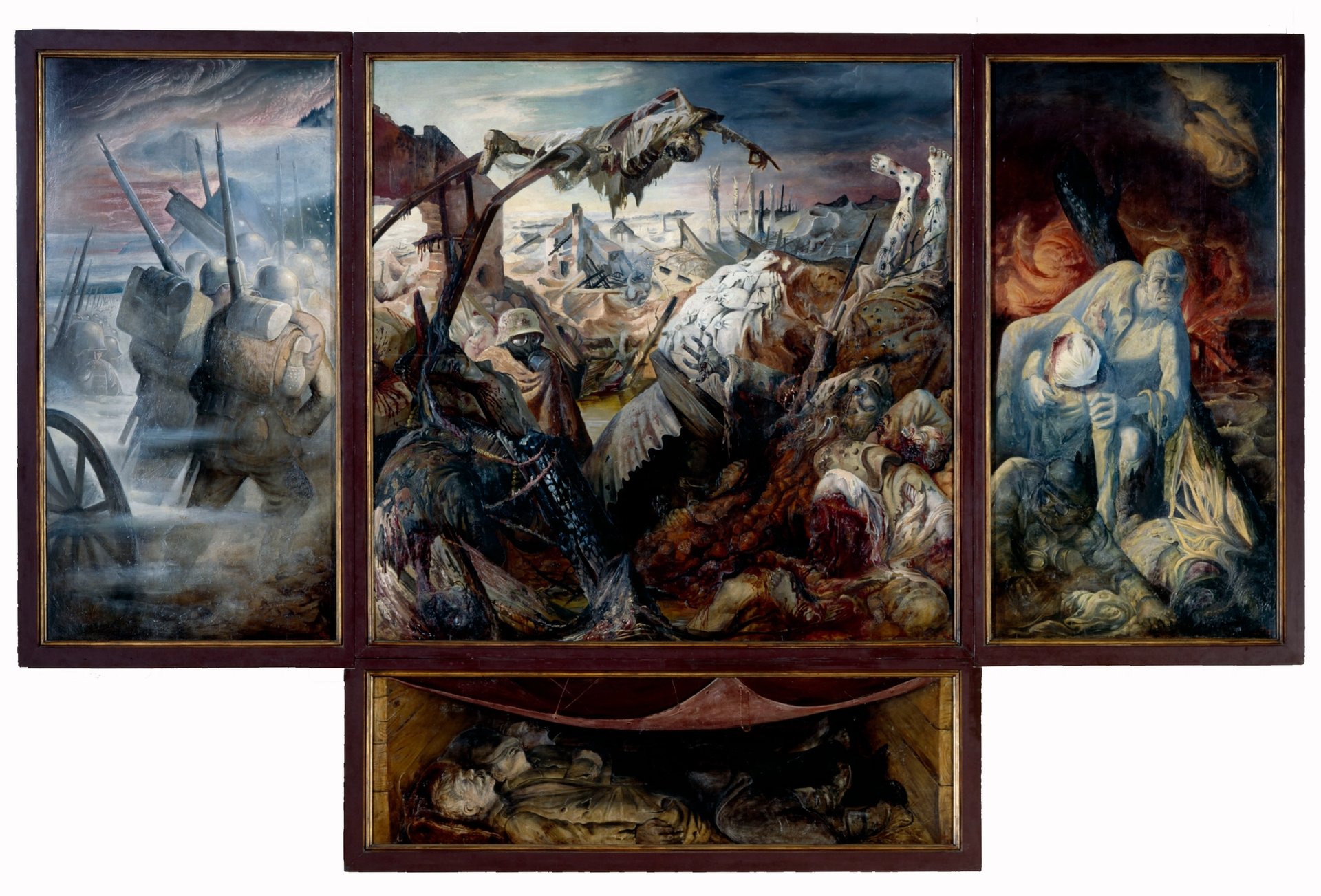
Otto Dix, The War (1929-32)
© Albertinum, Galerie Neue Meister, SKD, Foto: Elke Estel/Hans-Peter Klut / VG Bild-Kunst Bonn, 22025
6. Ceremonial armour (1518/19-1583), Rüstkammer, Residenzschloss
The SKD’s Rüstkammer is nominally an armoury, but the majority of its grandiose pieces, while suggesting actual conflict, were just for show. Its rare treasures include an enormous 17th-century Ottoman tent, but the museum gives pride of place to this complete set of supremely detailed Swedish armour, made by an Antwerp goldsmith for a man and his horse.
The armour was originally commissioned by a Swedish king and then bought by a Saxon Elector (who paid a sum that could have bought him a whole castle). Its metalwork is decorated with chased floral tendrils, snakes, dolphins, sphinxes and griffins, as well as the deeds of Hercules. It is the jewel in the Rüstkammer’s crown.
Admission €16. Directions here
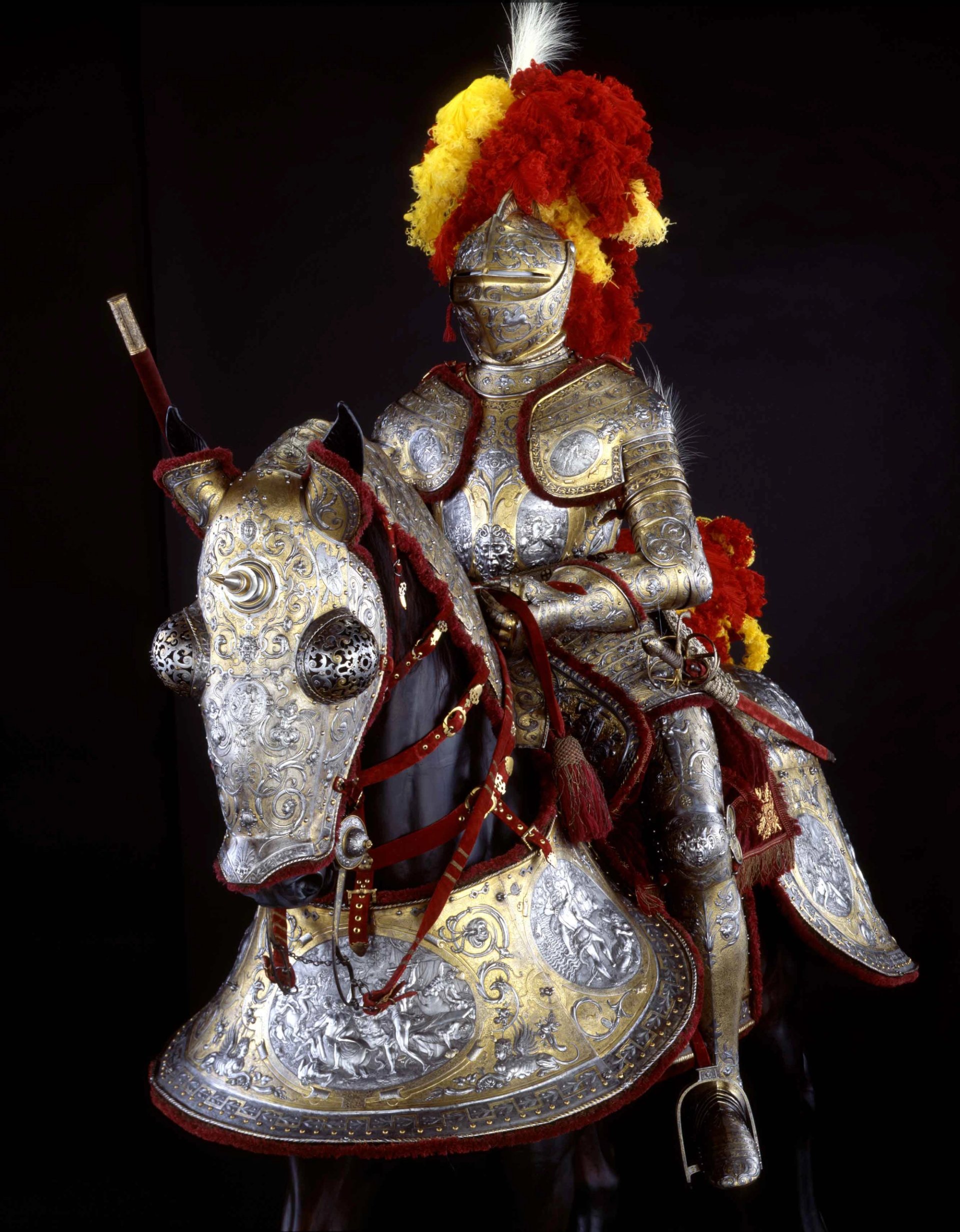
Ceremonial armour for a man and a horse (1563-1565). Made for King Erik XIV of Sweden; purchased by Elector Christian II of Saxony in 1606
© Rüstkammer, SKD. Photo: Jürgen Karpinski
7. Johannes Vermeer’s Girl Reading a Letter at an Open Window (around 1657-59), Gemäldegalerie Alte Meister, Zwinger (Semperbau)
Dresden made art-world headlines in 2021 when the SKD unveiled a painting-within-a-painting in this familiar Vermeer work. A Cupid figure, sequestered behind the centuries-old surface, was first discovered back in 1979, apparently decorating a wall behind the mysterious, letter-bearing woman.
It was long thought that Vermeer himself had covered it up after changing his mind. Then, during a 2017 treatment, conservators realised that a later hand—notably not Vermeer’s—had done the obscuring, and the SKD decided to restore the sumptuous element to what had seemed a decidedly minimalist setting.
Today visitors can enjoy the restored work, with Cupid, in an intimate side cabinet—alongside other works by Vermeer’s fellow Dutch masters.
Admission €16. Directions here
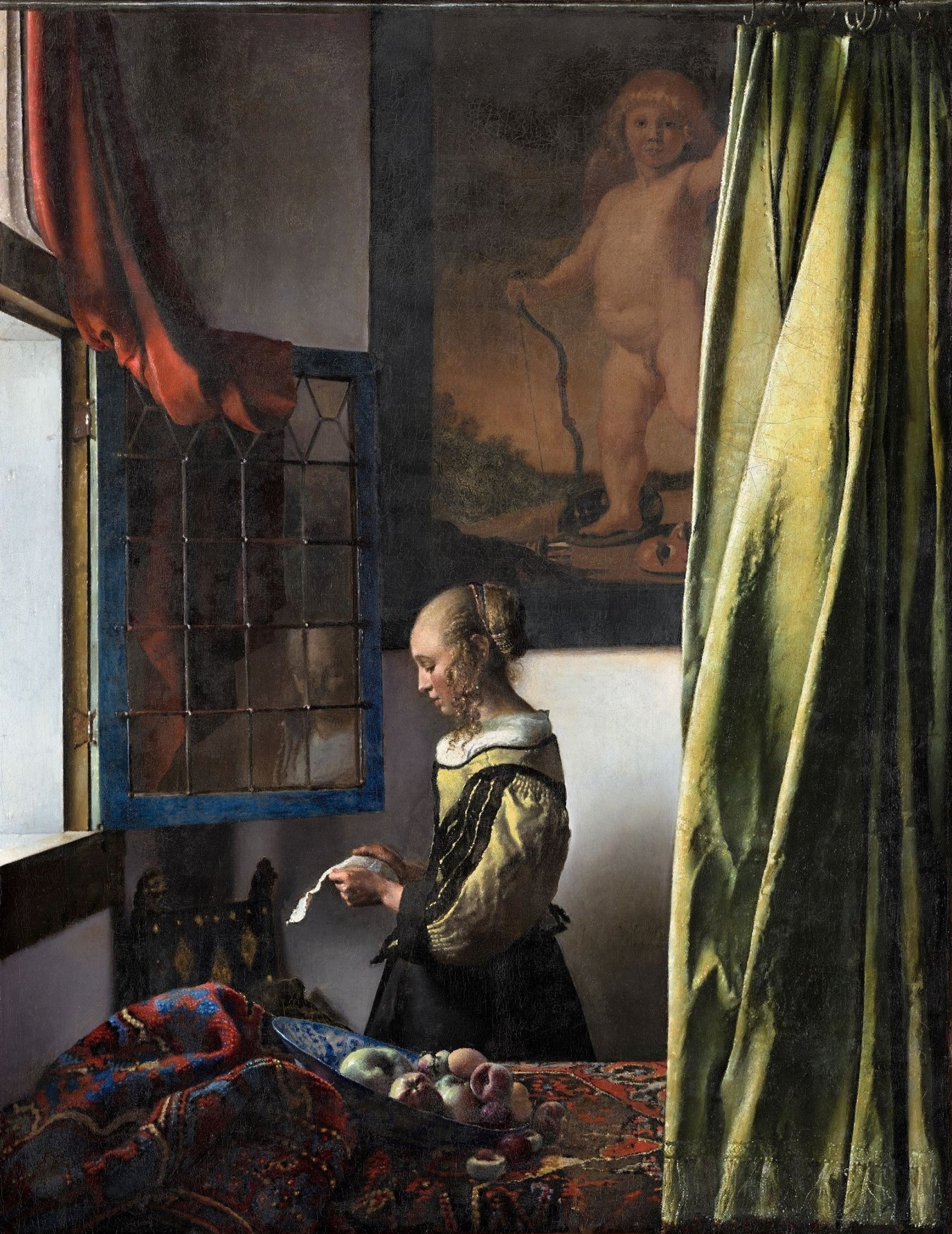
Johannes Vermeer, Girl Reading a Letter at an Open Window (around 1657-59) after its restoration
© Gemäldegalerie Alte Meister, SKD, Photo: Wolfgang Kreische
8. Lantern (Kangxi period, early 18th century), Porcelain Collection, Zwinger Palace
Germans distinguish between people who are merely interested in porcelain and people who are obsessed with it—sufferers, in a word, of Porzellankranheit, or “porcelain-disease”. Among history’s afflicted was Augustus the Strong, who just about bankrupted his realms in order to amass tens of thousands of pieces of near-priceless East Asian porcelain.
He later established Europe’s first porcelain manufactory, in the former Saxon capital of Meissen, and the SKD’s Porcelain Collection is rich in these sculptural works. They sit in the company of Augustus’ earlier purchases, such as this rare, paper-thin Chinese lantern, whose delicacy Meissen’s masters tried and failed to replicate.
Admission €16. Directions here
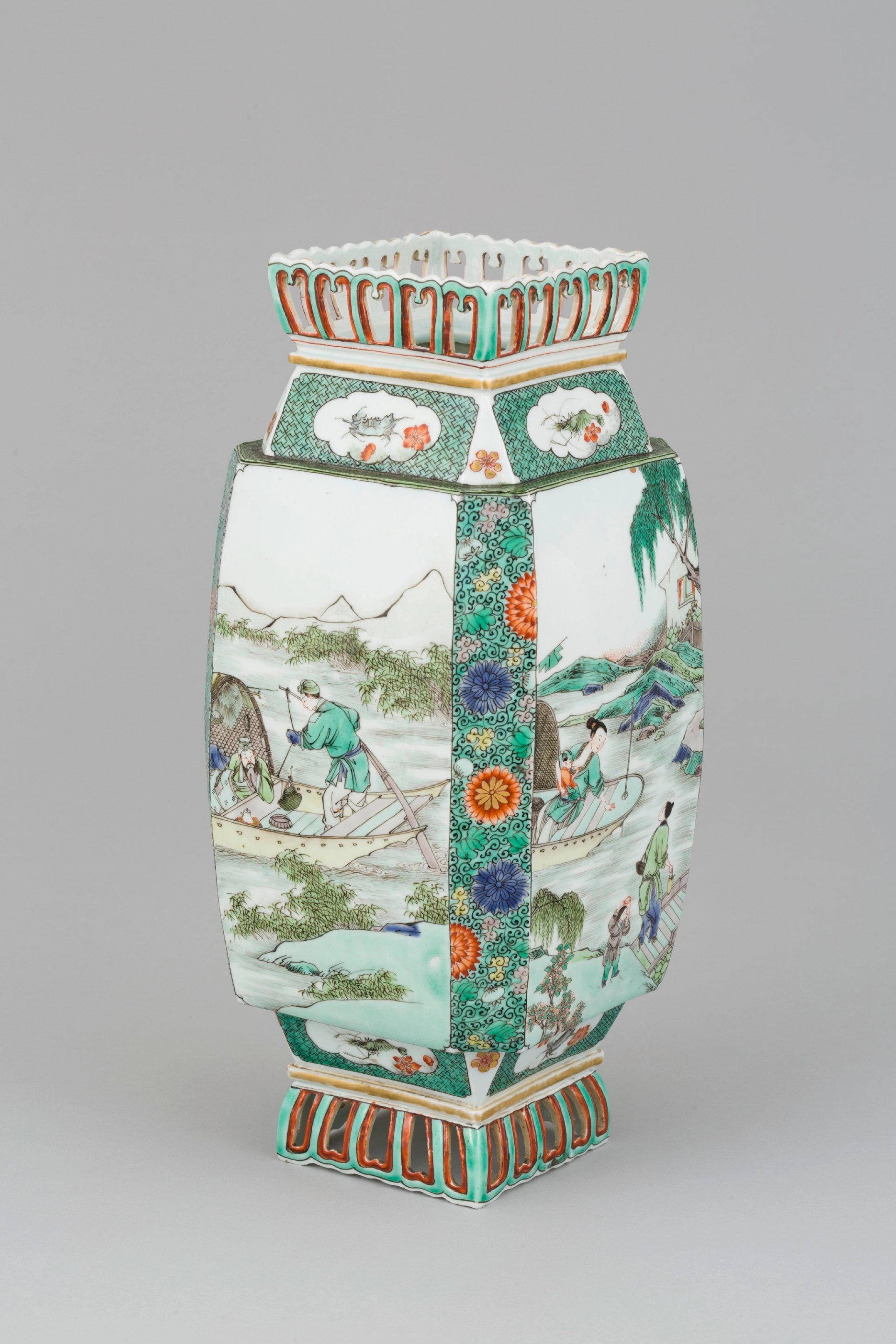
Lantern, Kangxi (early 18th century)
© Porzellansammlung, Staatliche Kunstsammlungen Dresden
9. Gerhard Richter, Secretary (1963), Galerie Neue Meister, Albertinum
Germany’s best-known living painter put down roots in West Germany’s Rhineland but was born in Dresden in 1932. Richter was a product of the city’s communist-era art academy, while also strongly influenced by the Gemäldegalerie’s Old Masters holdings.
He fled west in 1961, however his longstanding affection for his hometown’s cultural heritage was reaffirmed in 2006, when he set up the Gerhard Richter Archive, under the auspices of the SKD, in the Albertinum. That building’s Galerie Neue Meister is now also home to a noteworthy and comprehensive display of more than 70 Richter works, including this early photographic painting, inspired by a lurid tabloid story about a secretary, her boss and his wife, whom the boss murdered. Richter designed the display himself.
Admission €14. Directions here
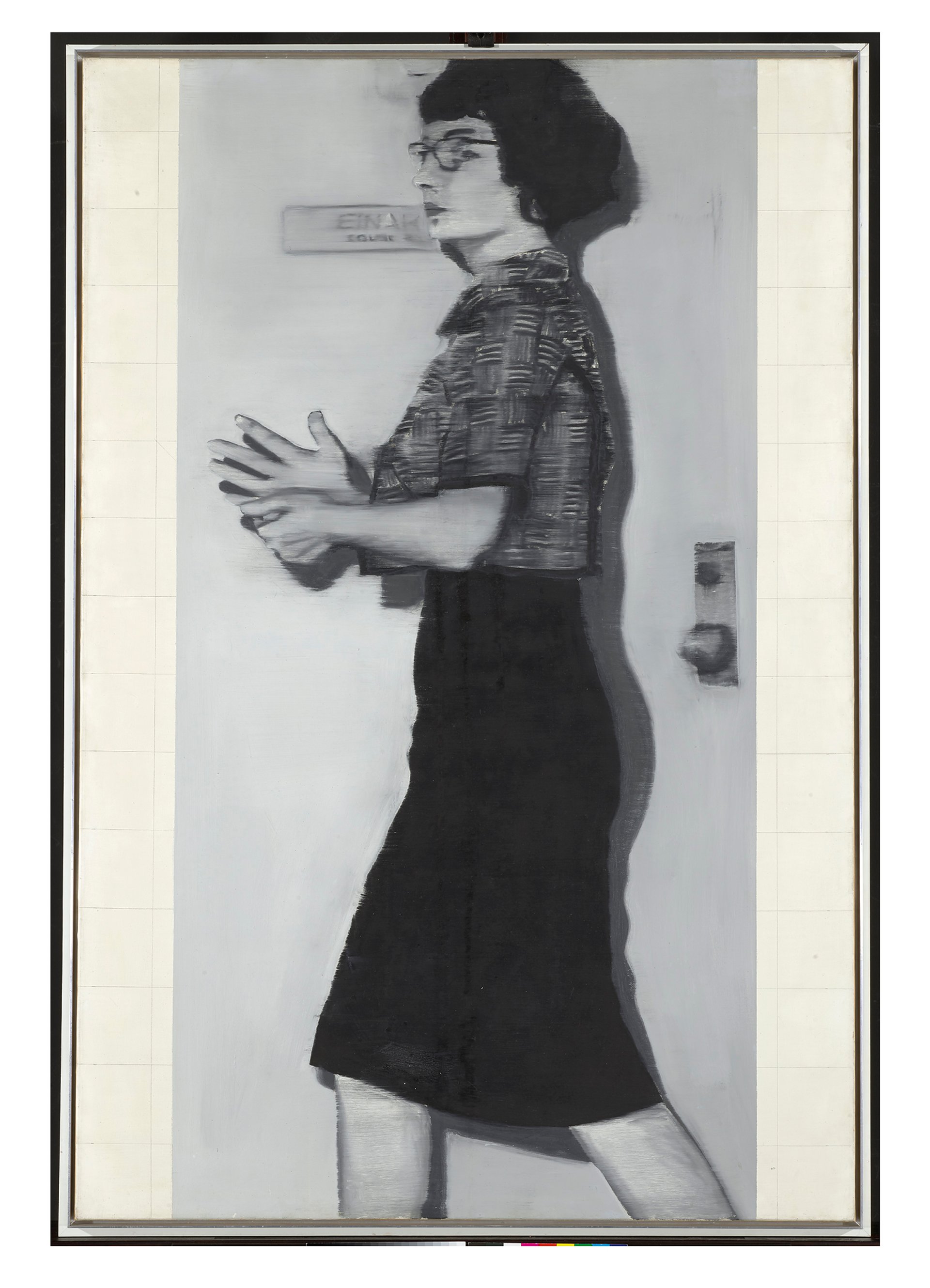
Gerhard Richter, Secretary (1963)
© Gerhard Richter 2025 (02092025). Photo: Elke Estel und Hans-Peter Klut | Staatliche Kunstsammlungen Dresden
10. Rosalba Carriera’s Self-Portrait as Winter (1730/31), Gemäldegalerie Alte Meister, Zwinger (Semperbau)
In its 18th-century prime, Dresden had an affinity for the Republic of Venice, then in its twilight years. As a result the Saxon capital’s Old Masters collection is a prime repository of Venetian pastel portraits by Carriera, who found willing buyers in Europe’s luxury-loving courts.
Trained as a lace maker, before switching to painting snuff boxes, Carriera subsequently emerged as the leading woman artist of her day, and her steady output helped foster a trend for pastels, as well as a grand stylistic shift from the Baroque to the Rococo. This self-portrait, made when she was in her late 50s, is a seasonal allegory. It has less of the frippery and jauntiness that she was known for, with intimations of aging and even death.
Admission €16. Directions here
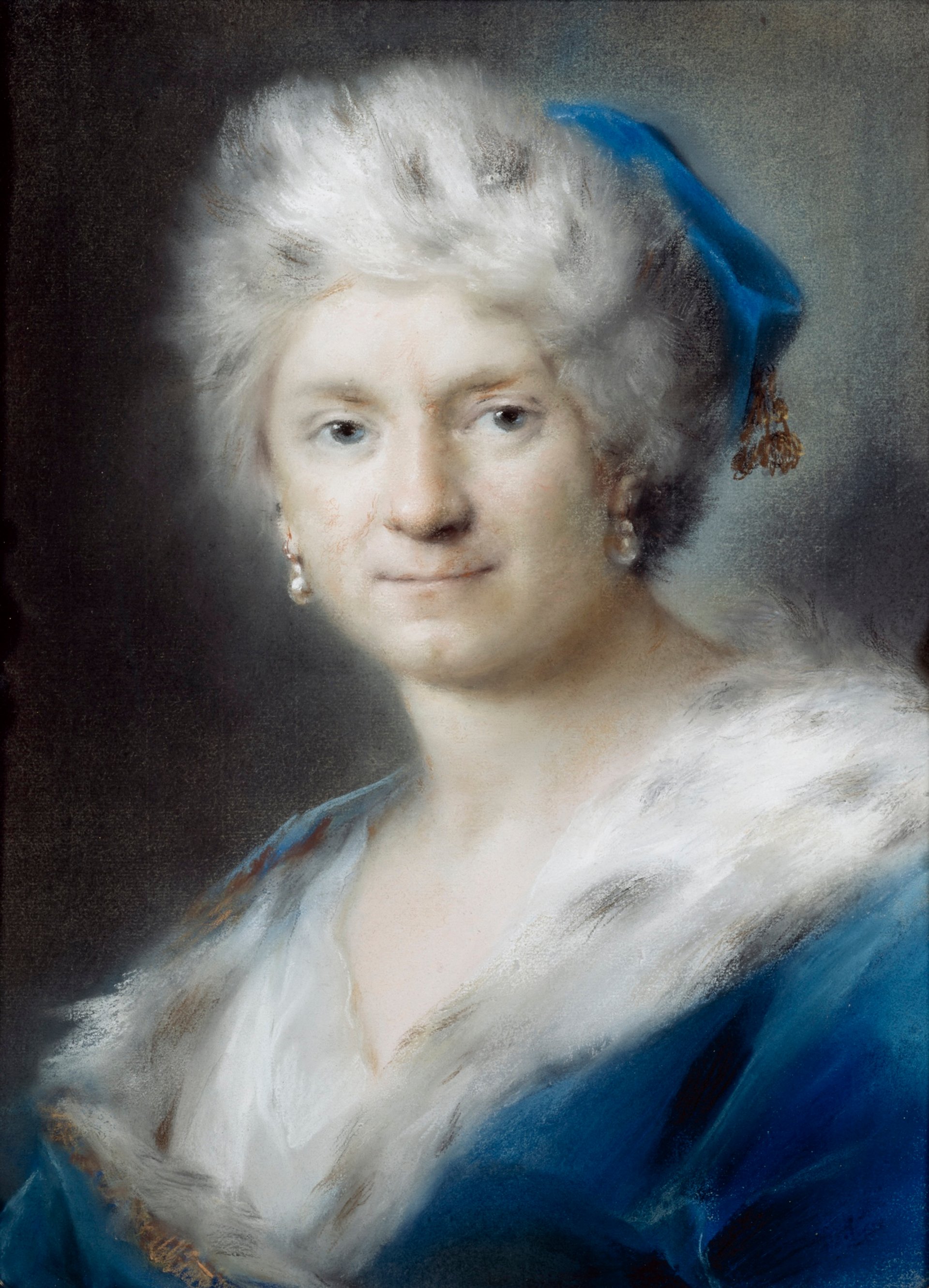
Rosalba Carriere, Self-Portrait as “Winter” (1731)
© Gemäldegalerie Alte Meister, SKD. Photo: Hans-Peter Klut
